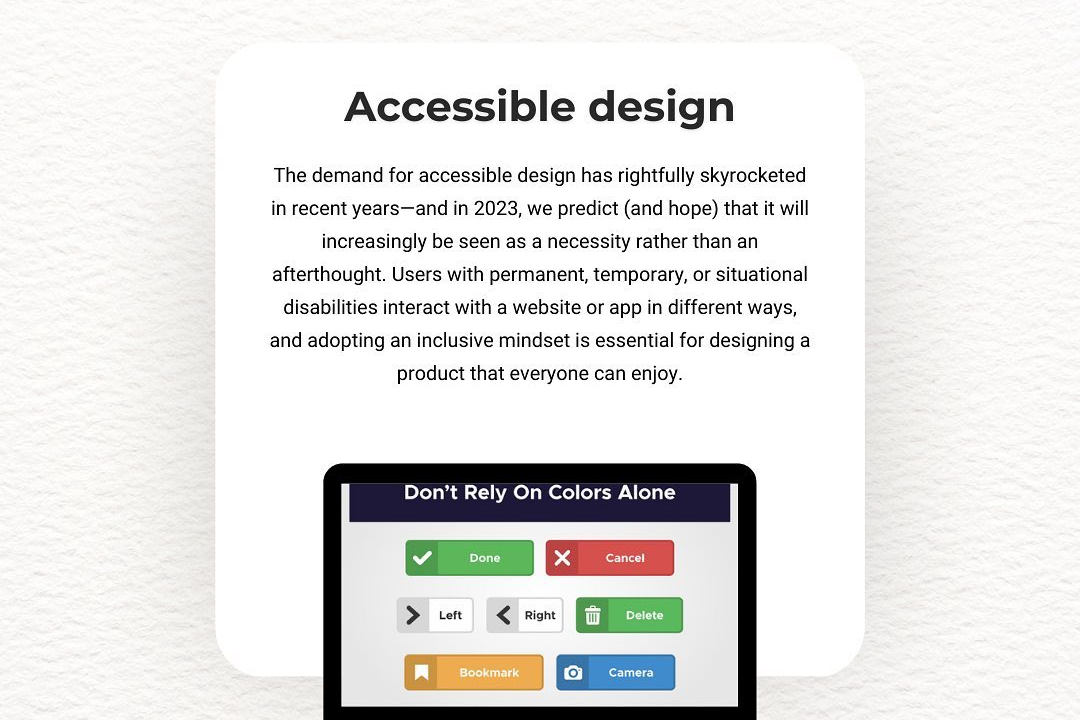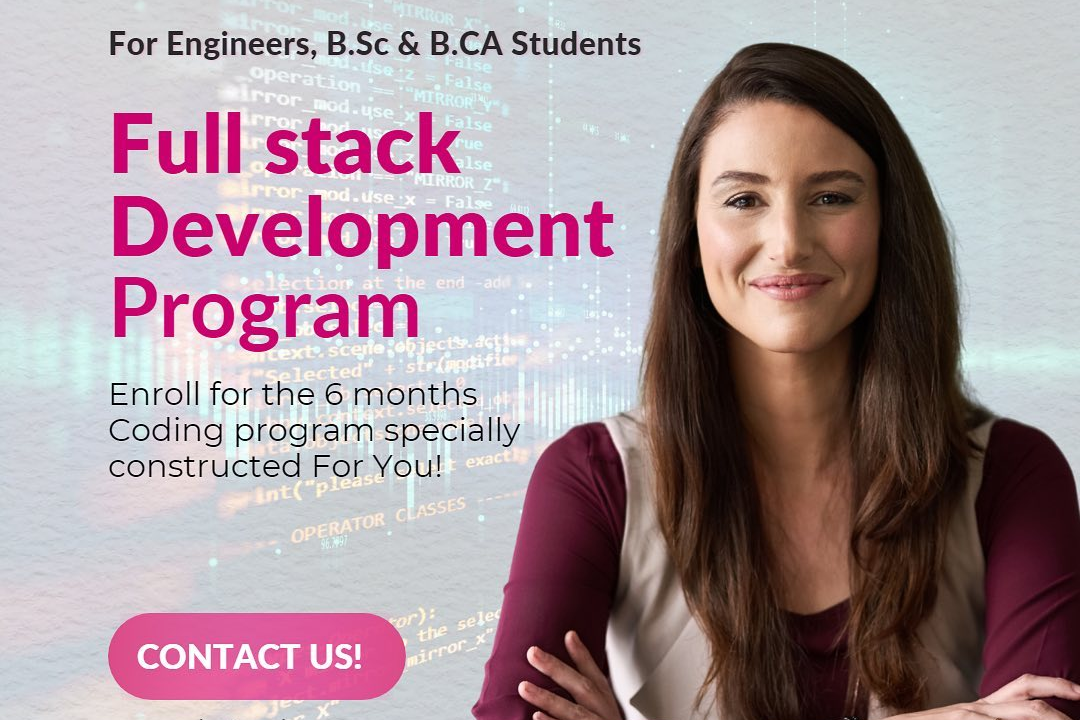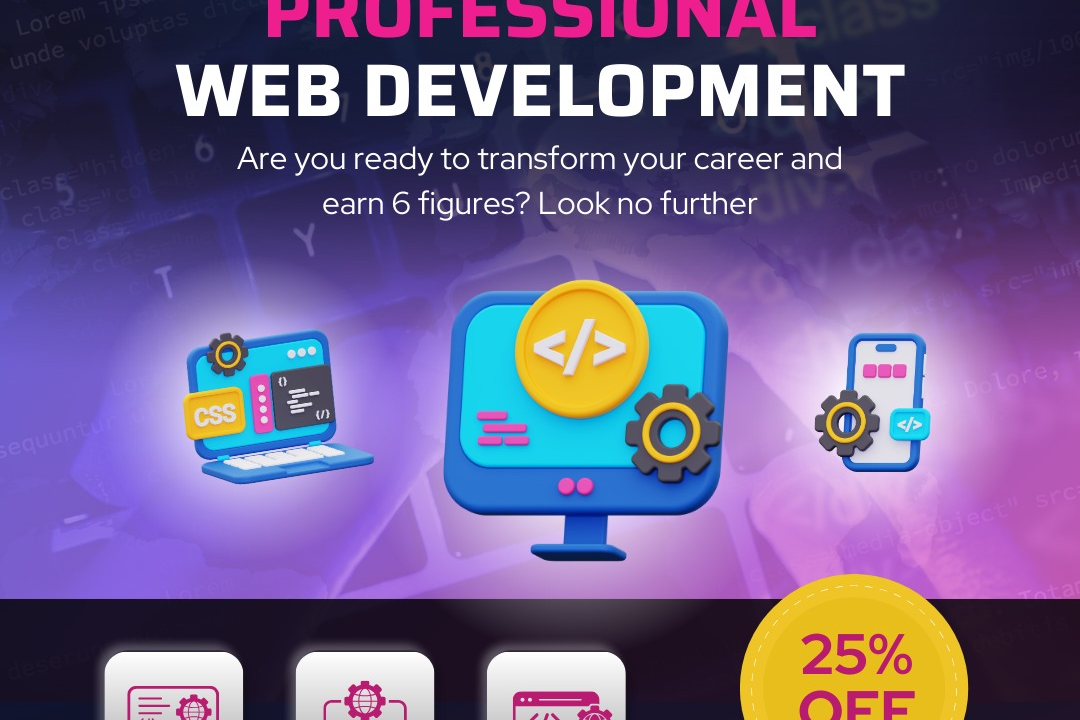Laravel Rest API Interview Questions and Answers
Essential Laravel Rest API Interview Questions and Answers
Laravel Rest API Interview Questions and Answers
Laravel REST API interview questions are essential for aspiring developers seeking to demonstrate their understanding of building and consuming RESTful services using the Laravel framework. These questions typically cover concepts such as routing, middleware, request handling, authentication, and resource management, allowing candidates to showcase their practical knowledge and skills. Mastering these topics not only prepares candidates for technical interviews but also equips them with the tools needed to develop scalable and efficient web applications. Being well-versed in Laravel's approach to REST APIs can significantly enhance a developer's profile, making them valuable assets in the job market where robust backend development is in high demand.
To Download Our Brochure: https://www.justacademy.co/download-brochure-for-free
Message us for more information: +91 9987184296
1 - What is Laravel?
Laravel is a PHP framework that provides an elegant syntax for building web applications, following the MVC (Model View Controller) architectural pattern. It simplifies common tasks such as routing, authentication, sessions, and caching.
2) What is a REST API?
A REST API (Representational State Transfer Application Programming Interface) is a set of guidelines for building web services that use HTTP requests to perform CRUD operations (Create, Read, Update, Delete) on resources, typically represented in formats like JSON or XML.
3) How do you define routes for a REST API in Laravel?
In Laravel, routes for a REST API are defined in the `routes/api.php` file. You can use the `Route::get()`, `Route::post()`, `Route::put()`, `Route::delete()` methods to set up routes corresponding to specific HTTP methods for your API endpoints.
4) What is the purpose of Laravel controllers?
Laravel controllers are used to group related request handling logic into a single class, making it easier to manage and maintain the application's code. Controllers process incoming requests, interact with models, and return responses.
5) Explain Eloquent ORM in Laravel.
Eloquent ORM (Object Relational Mapping) is Laravel's built in database abstraction layer, enabling developers to interact with the database using an object oriented syntax. It simplifies database queries by allowing developers to work with models and relationships seamlessly.
6) How do you implement authentication in a Laravel REST API?
Authentication can be implemented in a Laravel REST API using Passport or Sanctum, which offer a simple way to issue API tokens. You can protect your routes using middleware and handle user authentication via token based mechanisms.
7) What is middleware in Laravel?
Middleware in Laravel is a mechanism for filtering HTTP requests entering your application. It can perform tasks such as authentication, logging, or modifying requests and responses while processing them through the application's route.
8) How do you validate incoming requests in Laravel?
Incoming requests can be validated using Laravel's built in validation rules by applying the `validate()` method in a controller or by using Form Request objects. This ensures that data meets specific criteria before being processed.
9) Explain resource controllers in Laravel.
Resource controllers in Laravel provide a convenient way to create a controller that handles all the RESTful actions for a resource. They can be generated using the artisan command and automatically define routes for CRUD operations.
10) How can you version an API in Laravel?
API versioning in Laravel can be achieved by defining separate route files or including the version number in the URI, such as `/api/v1/resource`. This ensures backward compatibility and allows for incremental changes in your API.
11 - What is JSON serialization in Laravel?
JSON serialization in Laravel refers to the process of converting Eloquent models or collections to JSON format. This can be done by utilizing the `json()` method or automatically by returning a model instance from a controller.
12) What are API resources in Laravel?
API resources in Laravel provide a way to transform models and collections into JSON format, allowing for easier customization of API responses. They define how your data is structured when sent back to clients.
13) Describe how to handle CORS in a Laravel REST API.
Cross Origin Resource Sharing (CORS) in a Laravel REST API can be managed using the `laravel cors` package or CORS middleware to allow or restrict access to resources based on the origin of the request, enabling secure communication across different domains.
14) What is the purpose of routes/api.php file in Laravel?
The `routes/api.php` file is dedicated to defining API routes in Laravel. This separation helps keep the API routes organized and allows Laravel to apply specific middleware and configurations relevant to APIs.
15) How do you handle errors in a Laravel REST API?
Error handling in Laravel REST APIs can be managed using custom exception handlers. You can create specific response formats for different error types in the `render` method of the `app/Exceptions/Handler.php` file to provide clear feedback to API consumers.
16) What is Laravel Mix?
Laravel Mix is a wrapper around Webpack that provides a fluent API for defining build steps for your application’s assets. It simplifies tasks such as compiling CSS and JavaScript, optimizing images, and versioning files.
17) Explain migrations in Laravel.
Migrations in Laravel are a way to manage your database schema changes in a version control system. They allow developers to define and modify database tables using PHP, making it easier to keep track of changes and collaborate with other developers.
18) What is a service provider in Laravel?
Service providers are the central place of application bootstrapping in Laravel. They are responsible for binding classes into the service container and registering anything relevant to the application, such as services, events, middleware, and routes.
19) How do you handle pagination in Laravel?
Pagination in Laravel can be handled using Eloquent’s built in pagination methods such as `paginate()`, `simplePaginate()`, or `cursorPaginate()`. These methods return a `LengthAwarePaginator` instance, which provides convenient methods for paginated results.
20) What are Laravel jobs and queues?
Jobs in Laravel are tasks that can be processed in the background, and queues allow these jobs to be deferred for later execution. This is particularly useful for operations that may take a long time, such as sending emails or processing file uploads.
21 - Describe how to implement file uploads in Laravel.
File uploads in Laravel can be implemented using the `Request` class to handle file inputs. You can use the `store()` method to save uploaded files to the designated directory and optionally validate file types and sizes before storing.
22) What are Laravel events and listeners?
Events in Laravel are used to implement the observer pattern and allow you to create a way to listen and respond to various application activities. Listeners handle the event once it is fired, allowing for clean sepration of concerns and easier maintenance.
23) What is the purpose of the .env file in Laravel?
The `.env` file in Laravel is used to store environment variables for your application. It provides a convenient way to configure application settings, such as database credentials and API keys, without hard coding them in the application code.
24) How do you manipulate collections in Laravel?
Laravel provides a powerful Collection class that includes various methods for manipulating arrays of data. You can chain methods like `filter()`, `map()`, `reduce()`, and more, allowing for fluent and expressive data manipulation.
25) What is the use of the artisan command in Laravel?
Artisan is the command line interface included with Laravel, providing various commands for managing your application. It allows you to perform tasks such as running migrations, creating models, seeding databases, and running tests, which streamlines the development workflow.
26) How are configurations managed in Laravel?
Configurations in Laravel are managed through configuration files stored in the `config` directory. You can access configuration values using the `config()` helper function, making it easy to retrieve settings throughout your application.
27) What is the role of the service container in Laravel?
The service container in Laravel is a powerful tool for managing class dependencies and performing dependency injection. It allows you to bind interfaces to implementations, auto resolve dependencies, and facilitate testing by decoupling classes.
28) Explain the concept of facades in Laravel.
Facades in Laravel provide a static interface to classes that are available in the service container. They act as a shortcut for accessing underlying objects, enabling easier and more expressive syntax for common tasks without needing to resolve instances directly.
29) How do you implement caching in Laravel?
Caching in Laravel can be implemented using multiple cache drivers like Redis, Memcached, or file storage. You can store, retrieve, and delete cache items using the `Cache` facade, allowing for improved application performance.
30) What are traits in Laravel?
Traits in Laravel are a mechanism for code reuse in classes. They allow you to create reusable methods that can be included in multiple classes, promoting code modularity and reducing duplication.
31 - How can you secure your Laravel API?
Securing your Laravel API can be accomplished using various methods such as API token authentication, rate limiting, input validation, and implementing HTTPS. Additionally, you can use middleware to restrict access to certain routes based on user permissions.
32) Describe how to perform data seeding in Laravel.
Data seeding in Laravel allows you to populate your database with test data using seed classes. You can create seeders using the Artisan command, define how data will be created, and use `db:seed` to execute them and insert data into the specified tables.
33) What is a Laravel package and how do you create one?
A Laravel package is a way to encapsulate reusable code and functionality which can be easily shared across Laravel applications. You can create a package by organizing your code in a specific directory structure, defining a service provider, and registering it within your Laravel application.
34) How do you perform unit testing in Laravel?
Unit testing in Laravel can be performed using PHPUnit, which is integrated into the framework. You can create test cases using the Artisan command and utilize assertions to verify the behavior of your application, ensuring that your code functions as expected.
35) Explain the role of the CSRF token in Laravel.
The CSRF (Cross Site Request Forgery) token in Laravel serves to protect against unauthorized requests being made without the user's consent. Laravel includes CSRF protection for form submissions by automatically generating a token and validating it against the incoming requests.
This comprehensive list covers various aspects of Laravel, making it suitable for both beginners looking to understand the fundamentals and experienced developers seeking to deepen their knowledge.
Course Overview
The ‘Laravel REST API Interview Questions and Answers’ course is designed to prepare participants for interviews focused on Laravel and RESTful API development. This course covers a comprehensive range of essential topics, including core Laravel concepts, best practices for API development, common challenges, and practical solutions. Participants will engage with real-time projects, allowing them to apply their knowledge in a hands-on manner. By exploring frequently asked interview questions and model answers, learners will build the confidence and expertise necessary to excel in technical interviews, making them well-equipped for positions involving Laravel and API development.
Course Description
The “Laravel REST API Interview Questions and Answers” course offers a focused approach for aspiring developers seeking to ace interviews related to Laravel and RESTful API development. Participants will explore a wide range of interview questions and model answers, covering essential concepts such as routing, authentication, and CRUD operations in Laravel. With real-time projects integrated into the curriculum, learners will gain practical experience while mastering industry best practices. This course not only enhances theoretical knowledge but also builds the confidence needed to navigate technical interviews successfully, equipping participants with the tools to excel in their careers.
Key Features
1 - Comprehensive Tool Coverage: Provides hands-on training with a range of industry-standard testing tools, including Selenium, JIRA, LoadRunner, and TestRail.
2) Practical Exercises: Features real-world exercises and case studies to apply tools in various testing scenarios.
3) Interactive Learning: Includes interactive sessions with industry experts for personalized feedback and guidance.
4) Detailed Tutorials: Offers extensive tutorials and documentation on tool functionalities and best practices.
5) Advanced Techniques: Covers both fundamental and advanced techniques for using testing tools effectively.
6) Data Visualization: Integrates tools for visualizing test metrics and results, enhancing data interpretation and decision-making.
7) Tool Integration: Teaches how to integrate testing tools into the software development lifecycle for streamlined workflows.
8) Project-Based Learning: Focuses on project-based learning to build practical skills and create a portfolio of completed tasks.
9) Career Support: Provides resources and support for applying learned skills to real-world job scenarios, including resume building and interview preparation.
10) Up-to-Date Content: Ensures that course materials reflect the latest industry standards and tool updates.
Benefits of taking our course
Functional Tools
1 - Laravel Framework
The core tool used in this course is the Laravel framework itself, which is a powerful PHP web application framework that facilitates the development of robust RESTful APIs. Laravel's elegant syntax and expressive tools streamline common tasks such as routing, authentication, and caching. The framework's built in features, such as Eloquent ORM for database interactions, make it a preferred choice for developers aiming to create scalable applications. Through hands on exercises, students will learn how to leverage Laravel’s capabilities to build REST APIs that meet industry standards.
2) Postman
Postman is an essential tool for API testing and development within this course. Students will use Postman to send requests to their Laravel APIs, testing various endpoints and analyzing responses. This tool allows for the simulation of different HTTP methods like GET, POST, PUT, and DELETE, making it invaluable for understanding the CRUD operations typical in REST architecture. With Postman’s user friendly interface, learners will practice how to efficiently test and document their APIs, ensuring they are functioning correctly before deployment.
3) PHP and Composer
Students will utilize PHP as the programming language for building applications with Laravel. Alongside PHP, Composer serves as a dependency manager, allowing developers to manage libraries and packages required for their applications. In this course, students will learn how to set up their local environments with Composer, install necessary packages, and update their dependencies as needed. Understanding PHP and Composer is fundamental for managing Laravel applications effectively and solving practical challenges encountered during development.
4) MySQL Database
The course incorporates MySQL, a widely used relational database management system, for data storage within Laravel applications. Students will learn how to design databases, create tables, and manage relationships using Eloquent ORM. Practical exercises will cover executing queries and migrations, which help in version controlling database changes. This essential skill ensures that students comprehend how to handle data efficiently, a crucial part of developing any RESTful API.
5) Git and GitHub
Version control is a critical aspect of software development, and this course will introduce students to Git and GitHub for collaboration and project management. They will learn how to create repositories, manage branches, and resolve merge conflicts. By using Git, students will experience firsthand the importance of maintaining clean project management and the collaborative nature of programming. This hands on experience with Git enables them to prepare for real world development environments where teamwork and version control are essential.
6) Laravel Telescope
Laravel Telescope is an elegant debugging assistant for Laravel applications. It provides insights into the requests coming into the application, exceptions thrown, database queries executed, and more. In this course, students will learn how to integrate Telescope into their projects for monitoring and debugging their REST APIs effectively. Understanding how to use this tool enhances students' ability to track down issues and optimize their APIs, ensuring reliable performance in production settings.
7) API Authentication and Authorization
Understanding authentication and authorization is crucial when building secure REST APIs. This course will cover various methods, including token based authentication using Laravel Passport or Sanctum. Students will learn how to implement user authentication, manage user roles, and ensure that access rights are properly enforced. Through practical sessions, they will build secure endpoints that protect sensitive data and ensure that only authorized users can access specific resources.
8) Middleware in Laravel
Middleware provides a convenient mechanism for filtering HTTP requests entering your application. Students will explore how to create and use middleware in Laravel, allowing them to perform tasks such as logging, authentication, and data manipulation before a request reaches the intended controller. By applying middleware in their projects, learners will gain insights into how to efficiently manage application flow and enhance security.
9) Building RESTful Resources
This course will teach students how to build RESTful resources in Laravel, following best practices for API design. They will learn about resource controllers, route model binding, and RESTful resource routing, enabling them to create well structured and easily maintainable API endpoints. By the end of the course, students will be equipped to design APIs that adhere to REST principles, ensuring consistency and usability for front end interactions.
10) Testing Laravel Applications
Testing is a fundamental activity in software development that ensures the reliability and performance of applications. Students will learn how to write unit tests and feature tests for their Laravel APIs using PHPUnit. By implementing testing best practices, they will be able to validate the functionality of their applications, catch bugs early, and enhance code quality before deployment.
11 - Error Handling and Debugging
Effective error handling is essential for building robust applications. This course will cover the strategies for managing exceptions and logging errors in Laravel. Students will learn how to return informative error messages in API responses and track issues effectively. Hands on exercises will demonstrate how to implement custom exceptions and improve the end user experience by providing meaningful feedback when errors occur.
12) API Documentation with Swagger
Creating comprehensive documentation is vital for API usability. This course will introduce students to Swagger (OpenAPI) for documenting their REST APIs. They will learn how to annotate their code to generate interactive API documentation that provides clear guidelines on how to interact with their endpoints. By the end of this section, students will understand the importance of well documented APIs for developers and end users alike.
13) Deployment and Hosting
Once the APIs are developed, the next step is deployment. This course includes a module on deploying Laravel applications to various hosting platforms, such as AWS, Heroku, or DigitalOcean. Students will learn about environment configurations, server requirements, and deployment best practices. By the end of this training, learners will be confident in taking their projects from development to a live production environment.
14) Working with Frontend Technologies
Although this course focuses on backend API development, understanding how to connect APIs with frontend applications is invaluable. Students will receive an overview of popular frontend frameworks (like Vue.js or React) and how they can integrate with the Laravel REST APIs they create. This knowledge will empower students to build full stack applications and improve their marketability as developers.
15) Real time Project Experience
The course includes a capstone project where students will apply everything they've learned to develop a real world Laravel REST API application from scratch. They will work through the entire process—from initial planning and design to implementation and documentation. This practical project not only reinforces the course material but also prepares students for real world development scenarios and showcases their skills to potential employers.
16) Community and Networking
Enrolling in this course provides students with access to a community of peers, instructors, and industry professionals. Engage in discussions, share ideas, and receive feedback on projects. Networking opportunities can lead to collaboration, mentorship, and potential job opportunities in the future, creating pathways to success beyond the course itself.
Browse our course links : https://www.justacademy.co/all-courses
To Join our FREE DEMO Session:
This information is sourced from JustAcademy
Contact Info:
Roshan Chaturvedi
Message us on Whatsapp:
Email id: info@justacademy.co
Interview Questions On React Js Medium
Laravel Interview Questions In English












